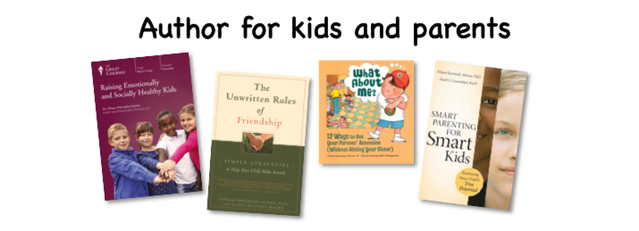
Just because two children live in the same neighborhood or share the same classroom doesn’t mean they’ll become friends. Children as young as one-and-a-half or two years of age show preferences for some peers over others.
One of the most common findings in research on children’s friendships is that children tend to be friends with other children whom they perceive as somehow similar to them. Kids are most likely to befriend other children who are the same age, sex, and ethnicity as they are. Friends also tend to be more similar than nonfriends in terms of interests, social skills, popularity, and academic achievement.
Friendship Ingredient 2: Similarity
So, the second ingredient of friendship formation is similarity. Similarity attracts because it’s satisfying to children at both a practical and an emotional level. At a practical level, it’s handy to have a friend who enjoy the same activities they do! At an emotional level, similarity provides a sense of comfort and validation.
- Refuting the Magnet Theory of Friendships
Many children don’t understand the importance of similarity for starting friendships because they have what I call The Magnet Theory of friendships. They believe they need to be somehow so wonderful that they draw friends to them the same way a magnet attracts steel.
This is often what’s behind bragging: A child says, “I can do this! I know that!”, hoping that peers will be impressed and want to be friends. The child is trying to communicate, “I want you to like me!” but the message that other children receive is “I think I’m better than you!” That’s no way to start a friendship.
Fundamentally, friendship is a relationship between equals, so the magnet theory is completely wrong. Instead of trying to get other kids to admire them, children need to find common ground with potential friends.
- Explaining the Concept of Common Ground
Here’s a way to the concept of common ground to your child: Draw two overlapping circles and say, “This circle is you. The other circle is the other kid. The part in the middle -- the overlap -- is where friendships grow. If you’re talking about something that’s outside the overlap, that’s true only of you and not the other kid, that has nothing to do with friendship.”
Ask your child, “How can you figure out what you have in common with someone?” Answers could include observing the other child, asking questions, or doing things together to create shared experiences.
Finding common ground doesn’t mean that your child has to be a clone of everyone else. It also doesn't mean that your child can never become friends with someone who has a different background or different interests. It just means recognizing that friendships start with connection. To make friends, children need to develop or discover those “me, too!” areas.
If expressing openness unlocks the door to friendship, and similarity predicts who’s most likely to walk through that door, the third ingredient of friendship formation is what encourages people to sit down and stay awhile, so friendship can grow. [See Part 3 of “How Children Make Friends”]
How were you and your childhood best friend similar or different?
Related posts:
How Children Make Friends (part 1 of 3)
How Children Make Friends (part 3 of 3)
Can Boys and Girls Be Friends?
__
© Eileen Kennedy-Moore, PhD. Google+ Twitter: psychauthormom
Eileen Kennedy-Moore, PhD, is an author and clinical psychologist in Princeton, NJ (lic. #35SI00425400). She frequently speaks at schools and conferences about parenting and children’s social and emotional development. www.EileenKennedyMoore.com
Subscribe to Dr. Kennedy-Moore’s monthly newsletter to be notified about new posts on the Growing Friendships blog.

Dr. Kennedy-Moore's books and videos:
-- Have you ever wanted a parenting course you could do at YOUR convenience?Check out this fun and fascinating audio/video series on children’s feelings and friendships from The Great Courses®: Raising Emotionally & Socially Healthy Kids. || Topics include: Teaching Kids to Care; Developing Genuine Self-Esteem; How Kids Manage Anxiety and Anger; Playing Well With Others; Growing Up Social in the Digital Age. VIDEO preview.
On sale 70% OFF at: www.TheGreatCourses.com/Kids
-- Smart Parenting for Smart Kids: Nurturing Your Child's True Potential || Chapters include: Tempering Perfectionism; Building Connection; Developing Motivation; Finding Joy. VIDEO preview.
-- The Unwritten Rules of Friendship: Simple Strategies to Help Your Child Make Friends || Chapters include: The Shy Child; The Little Adult; The Short-Fused Child; The Different Drummer.
-- What About Me? 12 Ways To Get Your Parents' Attention Without Hitting Your Sister. VIDEO preview.
Growing Friendshipsblog posts are for general educational purposes only. They may or may not be relevant for your particular situation. You’re welcome to link to this post, but please don’t reproduce it without written permission from the author.
photo credit: “boys, making planes” by Woodleywonderworks / CC BY 2.0
__
For further reading:
Gifford-Smith, M. E. & Brownell, C. A. (2002). Childhood peer relationships: social acceptance, friendships, and peer networks. Journal of School Psychology, 41, 235-284.
Haselager, G. J. T., Hartup, W. W., van Lieshout, C. F. M., & Riksen-Walraven, J. M. A. (1998). Similarities between friends and nonfriends in middle childhood. Child Development, 69, 1198-1208.
Nangle, D. W., Erdley, C. A., Zeff, K. R., Stanchfield, L. L., & Gold, J. A. (2004). Opposites do not attract: Social status and behavioral-style concordances and discordances among children and the peers who like or dislike them. Journal of Abnormal Child Psychology 32 425-434.




